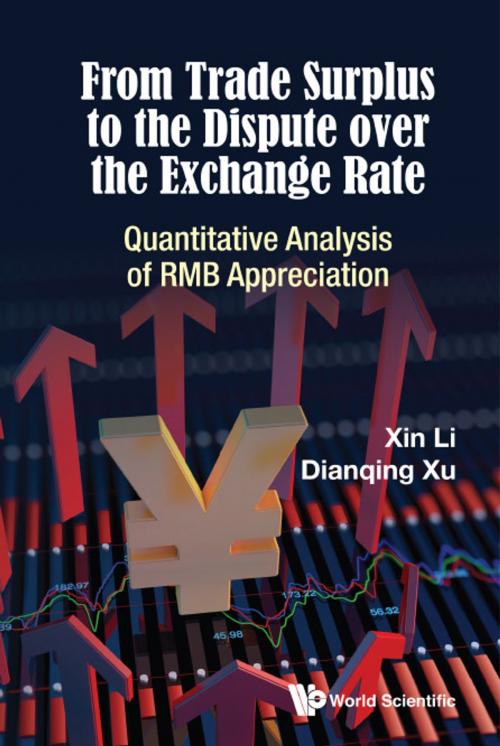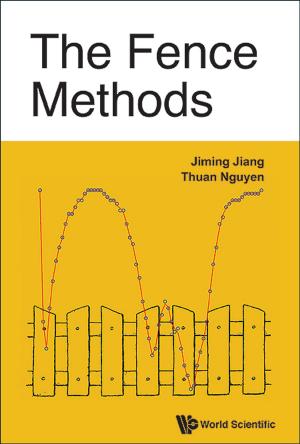From Trade Surplus to the Dispute over the Exchange Rate
Quantitative Analysis of RMB Appreciation
Business & Finance, Economics, Money & Monetary Policy, International Economics| Author: | Xin Li, Dianqing Xu | ISBN: | 9789814723978 |
| Publisher: | World Scientific Publishing Company | Publication: | February 29, 2016 |
| Imprint: | WSPC | Language: | English |
| Author: | Xin Li, Dianqing Xu |
| ISBN: | 9789814723978 |
| Publisher: | World Scientific Publishing Company |
| Publication: | February 29, 2016 |
| Imprint: | WSPC |
| Language: | English |
Since 2005, China has been accused of causing the trade deficit and manipulating the exchange rate. At the same time, there have been arguments against the RMB appreciation. The reason for this conflict is the lack of quantitative research or elaboration on many extremely important indicators.
To correctly describe the industrial chain and value-added process around the world, it is necessary to identify data by using new methods and separating the processing trade from the non-processing trade based on the Global Trade Analysis Project (GTAP) data. This book establishes a Global Multi-department Computable General Equilibrium (GMCGE) model based on the continuous global input-output database. It focuses on the Computable General Equilibrium (CGE) model that constructs a consistent interaction mechanism within the economic system and fully reflects the general equilibrium characteristics and thus tries to avoid the limitations of the partial equilibrium model. It shows how the GMCGE framework can distinguish the processing trade from non-processing trade in the input-output data, and at the same time ensure the endogenous equilibrium of the social accounting matrix (SAM) after distinction.
Contents:
- Overestimated Trade Surplus
- On Trade Surplus From Property Rights
- Interpreting the Economic Scale of China
- Foreign Trade Dependence and Trade Weighted Method
- The Standard in Judging the Exchange Rate
- Stabilizing the Currency and Manipulating the Exchange Rate
- Origin and Development of the High Saving Rate
- Computable General Equilibrium Model for Exchange Rate Research
- Effect of the Exchange Rate on Employment
- The Impact of the Exchange Rate Adjustment on Import and Export
- Range and Path of RMB Appreciation
- Economic Sanctions and Free Trade
- The Debate is Far From Over
Readership: Academics, undergraduate and graduate students, professionals interested in China's economic development, trade surplus and RMB appreciation.
Since 2005, China has been accused of causing the trade deficit and manipulating the exchange rate. At the same time, there have been arguments against the RMB appreciation. The reason for this conflict is the lack of quantitative research or elaboration on many extremely important indicators.
To correctly describe the industrial chain and value-added process around the world, it is necessary to identify data by using new methods and separating the processing trade from the non-processing trade based on the Global Trade Analysis Project (GTAP) data. This book establishes a Global Multi-department Computable General Equilibrium (GMCGE) model based on the continuous global input-output database. It focuses on the Computable General Equilibrium (CGE) model that constructs a consistent interaction mechanism within the economic system and fully reflects the general equilibrium characteristics and thus tries to avoid the limitations of the partial equilibrium model. It shows how the GMCGE framework can distinguish the processing trade from non-processing trade in the input-output data, and at the same time ensure the endogenous equilibrium of the social accounting matrix (SAM) after distinction.
Contents:
- Overestimated Trade Surplus
- On Trade Surplus From Property Rights
- Interpreting the Economic Scale of China
- Foreign Trade Dependence and Trade Weighted Method
- The Standard in Judging the Exchange Rate
- Stabilizing the Currency and Manipulating the Exchange Rate
- Origin and Development of the High Saving Rate
- Computable General Equilibrium Model for Exchange Rate Research
- Effect of the Exchange Rate on Employment
- The Impact of the Exchange Rate Adjustment on Import and Export
- Range and Path of RMB Appreciation
- Economic Sanctions and Free Trade
- The Debate is Far From Over
Readership: Academics, undergraduate and graduate students, professionals interested in China's economic development, trade surplus and RMB appreciation.















